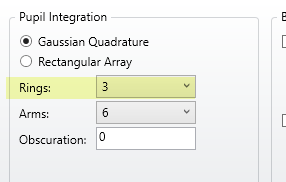Hello! We have a question about how we frequently get unexpected results in RMS spot radius when we optimize using variable aspherics. The question is best posed using an example:
We can optimize a two-doublet system with (light through a doublet, to a 45-deg. fold mirror, through another doublet, to the image) for one wavelength and achieve an RMS spot radius on the order of 11 microns. This is done using the optimization wizard set to image quality: SPOT and a merit function which outlines all of our important constraints, and this is only for STANDARD surfaces. We expected that, when choosing Find Best Asphere or setting aspheres to variable (V), we could optimize and improve performance; this assumption was incorrect, since repeatedly (it could be every single time, actually), our performance gets worse by multiples of 6, 10, or larger, in terms of RMS spot radius.
What is going on here? We were under the impression that by allowing OpticsStudio the option of adding an aspheric component (or not), the performance surely shouldn't get worse!
Thanks a lot. Hope this is clear enough. Happy to provide clarifications on our question. Fundamentally, we have some learning to do about the nature of optimization in general.
Unexpected Performance Degradation Using Variable Aspherics in Optimization
Enter your E-mail address. We'll send you an e-mail with instructions to reset your password.




